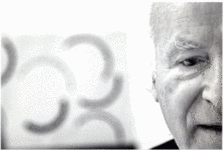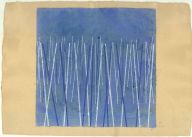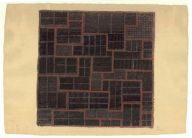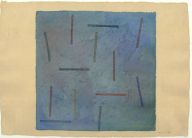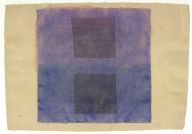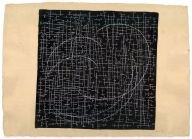Ennio Tamburi (Jesi, 1936 - Rome, 2018) lived and worked in Rome and Zurich and was one of the main exponents of pictorial abstraction from the eighties onwards.
After a long and successful season of experimentation with different techniques (graphics, sculpture, assembly) used in a political-existentialist key, the artist came to a work focused on the use of fine oriental papers on which the repetition of minimal signs and variable geometric elements, frequently rendered with watercolor painting, defines compositions characterized by a clear visual continuity: here the artist's choice to recall the idea so frequently in the titles of his exhibitions “Continuo".
After exhibiting in Italy and abroad in important public and private galleries since the early 1960s, in 2012 the National Gallery of Modern Art in Rome dedicated a major retrospective to the artist.
In his most recent works Tamburi achieves unprecedented results of compositional balance. The forms of abstract painting, in fact, become the definitive through a deep and touching meditation on fundamental themes: nature, time, existence.
"My direction is towards unfinished, fluid geometric shapes, With the liquid matter of colors left free to run: I create, The embankments on the paper, but I also like the shapes to pass, However, flaking. There is in this, I believe, a new sense, Dramatic that entered my life: in fact, water is even something that escapes. What's the TIME like". [E.T., March 2018]
Artist interview on Panorama 6/2/2008 article Miriam Dolce
Ennio Tamburi participated in the most significant artistic movements starting experience before informal (Premio Arezzo, in May of Bari, Award Prato, Meetings Art - Bologna) then object and conceptual. That period are the sculptures in metal and neon, the staples, the caesura. Exhibited in group shows and personal Contemporanea, Rome 1972; Point Gallery, Turin 1973, the Festival dei Due Mondi, Spoleto 1974, Volterra - interventions in the City 1974 Venice Biennale, Palazzo dei Diamanti, Ferrara 1975; Gallery Two Worlds Rome 1976, Galleria d'Arte Moderna, Arezzo 1976, Galleria La Tartaruga, Rome 1977, Kunsthalle, Cologne and Dusseldorf 1977, Gallery 2000 - Bologna 1978.
The latest issue and research develops on the study of opposing forces that create energy and movement. In recent years has exposed: Gallery Salomon, Paris 1980, Mark Gallery, Paris 1982; Velabro Studio, Rome 1985; fourteenth century Fortezza, Montalcino 1987, Temple University, Rome - Philadelphia 1990; Tunnel '500, Siena 1992; Ari Gallery, New South Walcs, Sydney 1993, Kunsthaus Richterswil 1998; Center for Italian Studies, Zurich 1999, Die Halle, Zurich 2000, Auton Meier Gallery, Geneva 2003; Li Art, Rome 2005; Casanatense Library, Rome 2006; Lazertis Galerie, Zurich 2007, Fabre / boutiques, Milan 2008
He worked at the scenes of films like "Sense" and "Death in Venice" by Luchino Visconti and "What?" By Roman Polanski. He designed several posters for shows of Giorgio Strehler and Luca Ronconi. One of his work is in the collection "Italian artists of the twentieth century" of the Ministry of Foreign Affairs. They wrote about his work: Emilio Villa, Enrico Crispolti, Cesare Vivaldi, Mantura Bruno, Luca Barbero, Dario Micacchi, Elio Mercuri, Duccio Trombadori, Alessandro Sardella, Susanna Kappeler, Luca Amanda. His works are exhibited in public and private collections.
